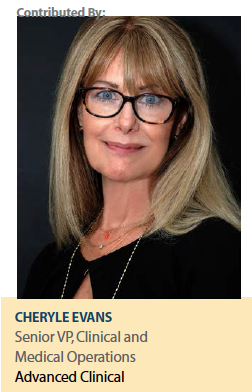Choosing your first risk-based monitoring (RBM) program is a big decision. As RBM continues to gain traction in many clinical programs across our industry, it is important to know how to evaluate when RBM is the best choice for your development program. Service providers have been confronted by various challenges in implementing RBM programs, ranging from change management to analytical tool selection. We have pushed through these common challenges to progressing RBM by considering the following conditions of readiness:
programs across our industry, it is important to know how to evaluate when RBM is the best choice for your development program. Service providers have been confronted by various challenges in implementing RBM programs, ranging from change management to analytical tool selection. We have pushed through these common challenges to progressing RBM by considering the following conditions of readiness:
1. Establish a Formal Change Management Plan.
More than likely within your organization there is a spectrum of individuals and/or functional areas that accept, reject, or are risk-averse to selecting RBM. A formal plan ensures a structured approach to leading the change in a safe and inclusive manner.
There are many resources that can be applied to develop an outline for the continuum of change, such as John Kotter’s methods for leading change, including development of strategy, methodology, and implementation.
2 Select Analytical Tool.
For ease of analyzing data from disparate sources of truth, an agnostic analytical tool where risk identification and closure are within the same system will serve to provide dashboard visualizations necessary for project teams to assess risk, collaborate, and document observations and actions.
3. Delineate Process & Procedure.
If you have not yet operationalized RBM, consider using a CRO that has the process defined with comprehensive policies, governance, plans, flow maps, procedures, and training matrices to conduct the study.
4. Consider Study Phase and Country Mix.
While RBM may be applied to all study phases, late-phase programs with larger sample sizes lend themselves to more robust risk assessments of core key indices and reduce uncertainty.
Additively, one of the greater benefits of selecting an RBM program for global studies is enhanced awareness and the opportunity to course-correct early by geographic region or country.
Since sponsor companies can identify outlier sites or regions with more precision as the number of sites and number of subject per site increase, large, global studies are ideal for RBM.
5. Assess Project Enrollment Rate.
As a data-driven indicator, slow enrollment will impact RBM related to key risk indicators (KRIs) of enrollment rates, screen failure (SF) rate, reasons for SF, discontinuation ratio, and discontinuation reasons.
6. Understand the Difference between RBM and CTMS.
A RBM dashboard is not a clinical trial management system (CTMS); a CTMS does not provide the risk analytics necessary to generate a dashboard of KRIs. While a CTMS provides valuable site-by-site status reporting, RBM provides comparative data between sites and across regions for predetermined KRIs. The primary goal of the RBM visualizations is to identify sites that differ from other sites (site outliers).
Ensuring that the first RBM study is successful is imperative for any organization. Be ready to take the important next step by considering readiness of organizational culture and adaptability, study specifications, tools, technology, and processes. In doing so, you are more likely to smoothly transition and reap the benefits of RBM including quality, transparency, and return on investment. (PV)
Advanced Clinical provides global clinical development services, including CRO, functional support, quality and validation, patient recruitment and retention, and strategic talent acquisition.
For more information, visit advancedclinical.com.











